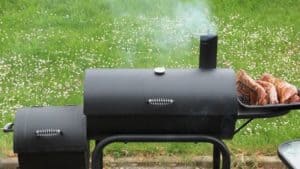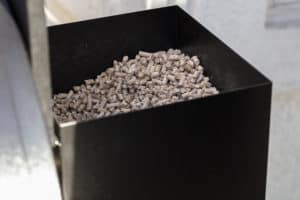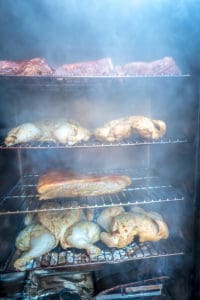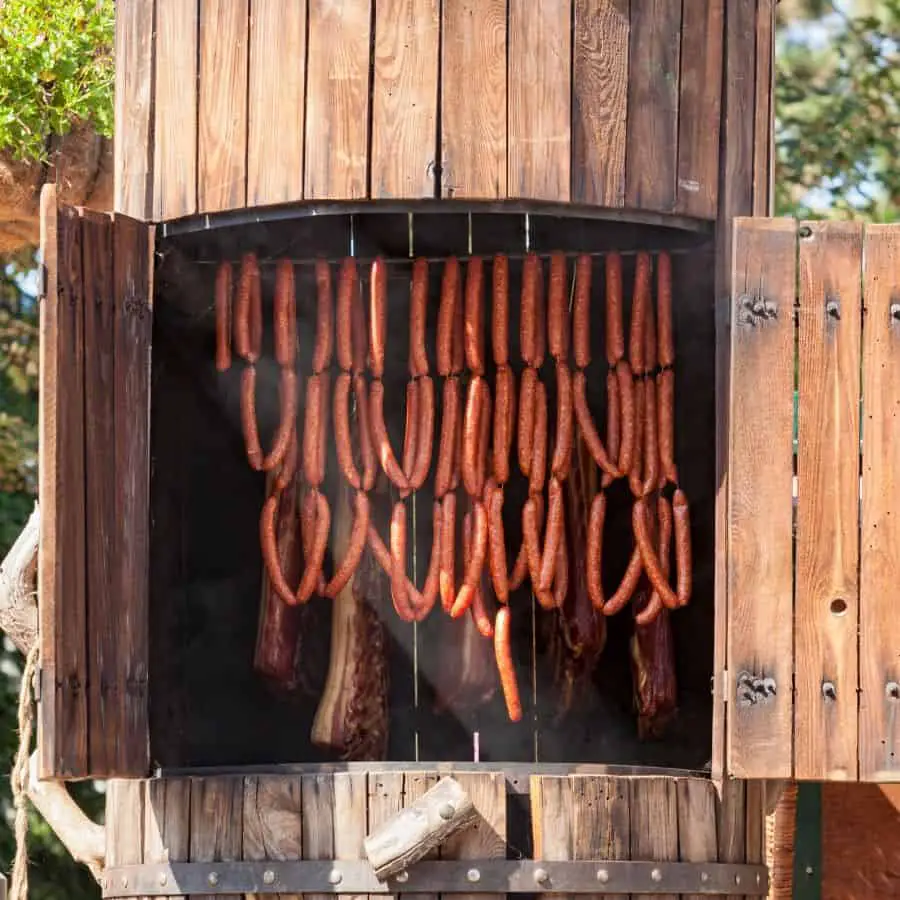What You Need to Know BEFORE Buying a Pellet Smoker
Disclosure: This post may contain affiliate links. If you use these links to buy something we may earn a commission at not additional cost to you. Learn more.
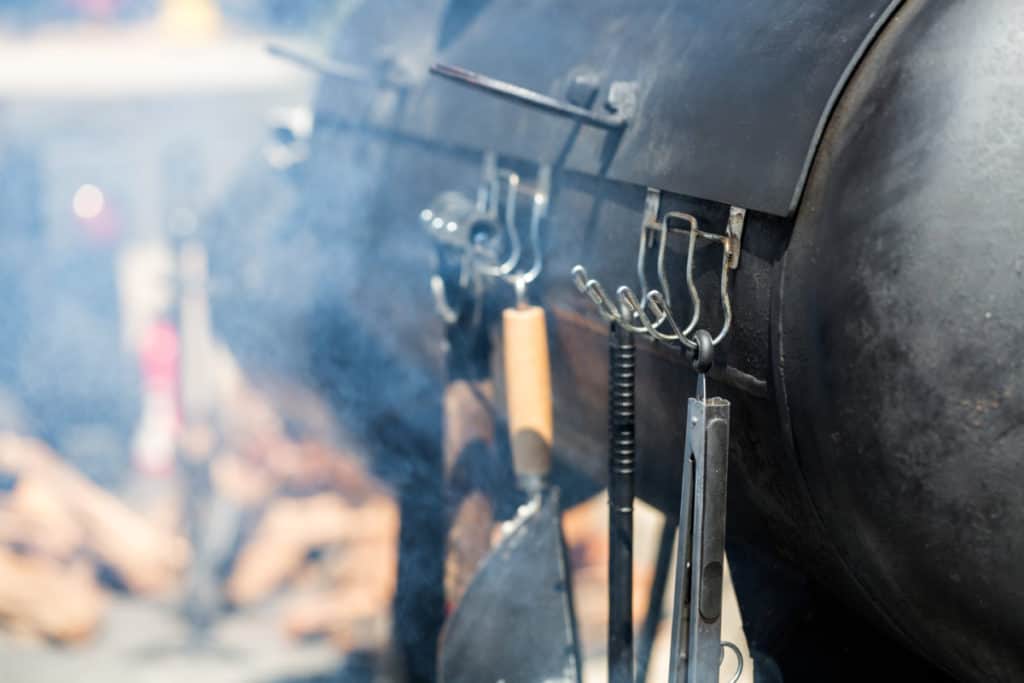
Whether you’re an experienced pitmaster or are just starting out in the world of BBQ, one of the biggest decisions you need to make is what kind of smoker you want to buy. There are lots of different varieties, and each of them can be great in the hands of a skilled smoker.
One of the most popular types today is the pellet smoker. These modes are fueled by wood pellets that are made from compressed sawdust. They were only invented a few years ago, but now they’re widely available and are quite popular among pitmasters of all expertise levels.
Before you dive in and buy one though, you really need to look at all the angles. Pellet smokers are certainly popular, but there are a lot of factors that come into play once you buy one. Below, we’ll explore what a pellet smoker is, how their fuel compares to other types, how to clean them, average prices, and a few recommended products.
What Is A Pellet Smoker?
Pellet smokers are fairly new additions to the BBQ world, but they’ve already made quite an impression. They’re named “pellet smokers” because of their fuel. The small wood pellets are made from compressed sawdust and resemble miniature corks. Like wood chips, they produce a good amount of smoke and heat when they’re burned. However, due to their compressed design, they take longer to burn and are able to provide a hot, steady temperature. This makes pellet smokers great for cooking a variety of foods.
In terms of design, pellet smokers resemble offset smokers. They both have horizontal designs with separate chambers for the firebox and the smoking chamber. The firebox is usually smaller than the smoking chamber and it’s set off to one side. The firebox of a pellet smoker contains a hopper that’s full of unburned pellets. Most current models can monitor the internal temperature of the smoker and automatically adjust the temperature by adding an appropriate number of pellets to the fire.
There is still some flexibility in the design of a pellet smoker, so not every model is the same. Some smokers have a vertical design that directly connects the heat source and the smoking chamber. Others are smaller and designed to be more portable. The main feature that distinguishes pellet smokers from other types is their fuel source.
Beginner, Intermediate, or Advanced?
Any smoker can be effective in the hands of an experienced pitmaster, but some types are much easier to get the hang of. Pellet smokers are pretty accessible for beginners because of their self-regulating temperatures and intuitive designs. The separation between the firebox and the smoking chamber is handy as well since you can tend to the fire without releasing the smoke.
Plus, all pellet smokers are fairly new, so most standard models come with electrical appliances and high-tech accessories. They are fairly expensive though, so new smokers should decide whether they’re willing to drop a couple hundred dollars on this investment before they commit.
Wood Pellets vs. Charcoal, Wood Fire, And Propane
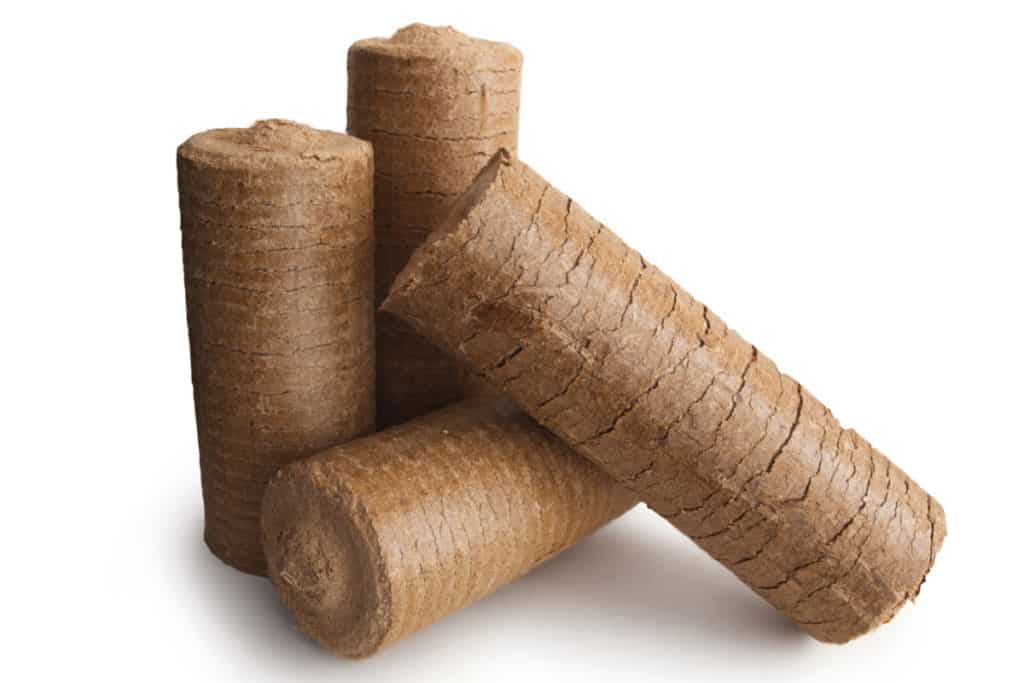
Wood pellets are a fairly new type of fuel. They combine the flammability of wood with the compression and compact size of coal or charcoal. Each type of fuel has its own pros and cons though, so you should look at all the different types before you commit to buying a pellet smoker.
Wood Pellets:
The main fuel source for a pellet grill is, you guessed it, wood pellets! Some models may use gas or electricity to keep the fire going steady, but pellet grills mainly need wood fuel. Pellets are desirable because they produce the same smoke quality as a wood fire, but they are more compacted and easier to burn.
The potential downside to using pellets is that they might be pricey to buy. Initially, it won’t seem like much, but you’ll probably go through multiple bags in a season, especially if you prefer long cook times. The pellets can also swell up if they’re exposed to water, which will make it hard to light fires and may even damage the smoker.
Charcoal:
Charcoal is another very popular fuel for smokers. There are different types of charcoal, but briquettes in particular are perfect for long, slow smokes. They burn for a longer period of time and keep a nice, steady heat. Many pitmasters like to mix wood chips into the charcoal because this produces more smoke and enhances the flavor.
On the other hand, charcoal can be tricky to work with. It takes more time and effort to get charcoal properly arranged and heated up. It can also be expensive when you need to stock up on several bags. Charcoal has one of the largest carbon footprints as well, so this may not be the best fuel choice for eco-friendly pitmasters.
Wood Fires:
Many modern smokers run off of charcoal, electricity, gas, or other low-effort heat sources. But wood fires are the oldest player in this game. The first cooks who used smoke to add flavor to their food did it over wood fires. Many traditionalist pitmasters still prefer this method and use smokers that run off of wood, and wood alone.
It’s not easy for every smoker to cook this way though. Wood fires are notoriously hard to manage because they need a constant supply of fuel and oxygen. You can’t just flip a switch and wait for the temperature to adjust! Wood fires also have a greater potential to die out and sometimes provide an inconsistent cooking temperature.
Gas/Electricity:
A lot of modern grills and smokers are powered by gas or electricity. These fuel sources are fairly cheap and are easy for beginners to get the hang of. It’s easy to adjust the temperature and you don’t need to worry about tending the fire. Some smokers even have modern amenities, such as remote Bluetooth operation.
Unfortunately, gas and electric smokers don’t produce a lot of smoke by themselves and the food can have a bit of an artificial taste. Most people who use these smokers need to add wood chips to the system to produce a better flavor.
Initial Price And Fuel Cost
As is the case with any product, there is a range of prices you can expect when you’re shopping for a pellet smoker. The average price is about $425, but they can be as cheap as $300 or as expensive as $700. There are much cheaper kinds of smokers, but pellet smokers are new to the market, good quality, and in high demand.
Smoker pellets usually cost about $35 for a 40-lb. bag. You might go through these faster than you expect, so you may want to plan ahead and buy a couple of bags. The price per bag will vary depending on the brand, wood type, and bag size.
How To Clean A Pellet Smoker
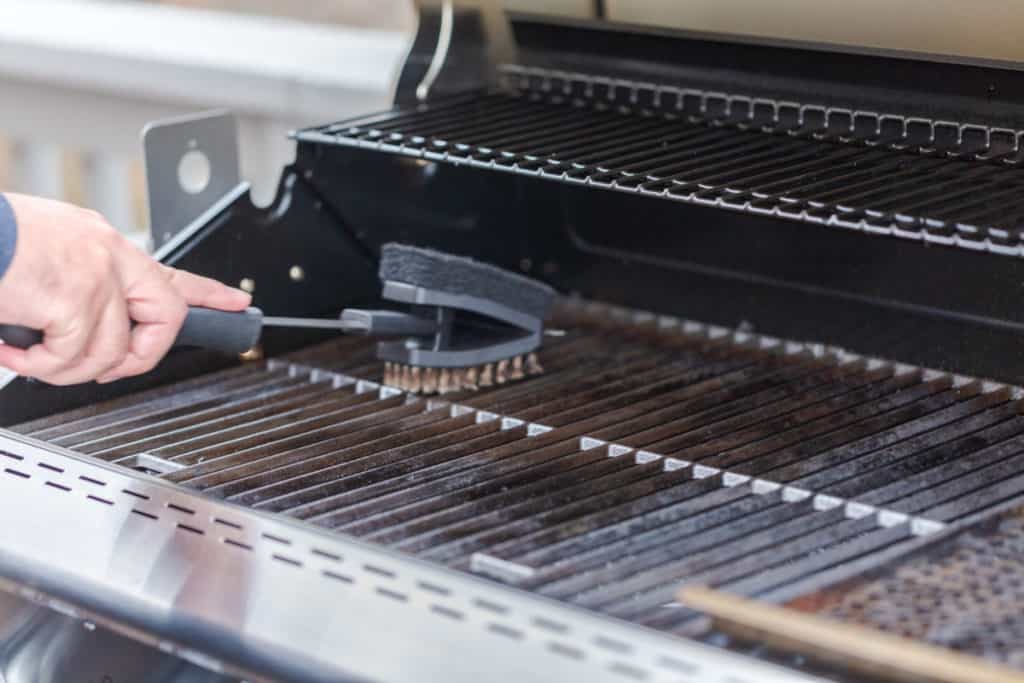
Another important part of choosing a smoker is learning about the necessary care, cleaning, and maintenance. You’ll want to know what you’re signing up for before you buy one of these units! Smokers can get greasy and dirty after only a few uses, and the buildup of ash can contaminate the food and block the airflow.
So to help you learn a bit more about the cleaning requirements of a pellet smoker, I’ve compiled a guide below. You’ll need to clean it after every 3-5 uses, so you should know what you’re signing up for!
First things first, you need to gather a few cleaning materials. Some of these items can be substituted, but you’ll need:
- A drop cloth or tarp
- A shop vacuum
- Plastic putty knife or griddle scraper
- A stiff, non-metallic bristle brush
- Long-handled wire brushes
- De-greaser cleaning spray and/or dish soap
- A bucket
- A hose
- Paper towels or damp hand towels
1. Wait at least 24 hours before you start cleaning the smoker. This gives it enough time to cool down completely and makes it safer to work with. Unplug any electrical cords or gas lines and wheel the smoker onto the tarp. (Try to clean the smoker in an outdoor area. Porches, yards, home basketball courts, driveways, patios, and garages can all work nicely.)
2. Next, you need to empty the pellet hopper. Most smokers come with a hatch or door built into the firebox. Place a garbage bag below the hopper and empty the contents into it. Dispose of the burned pellet scraps in a non-flammable garbage can. Wood ashes can also be used in a compost system or repurposed as fertilizer if you’re interested in recycling the leftovers.
3. Once the hopper is empty, you need to remove the grilling grate and drip pan. These are the pieces that come in direct contact with meat, grease, and any buildup of ash and charred remnants. They’re some of the dirtiest parts of a smoker, so they require a heavy cleaning regimen.
Scrape out the drip pan with a putty knife or other flat scraper. Metal instruments can scratch the metal of the smoker, so you should always try to use nonmetallic tools. Once you’ve scraped through most of the buildup, spray out the drip pan with a hose. With help from a cleaning spray or some dish soap, scrub the pan with a stiff bristle brush. Once it’s been thoroughly scrubbed, spray the pan one final time, thoroughly dry it, and set it aside.
4. Repeat the same cleaning process for the grilling plate. Use the putty knife to loosen any particularly stubborn debris. Then scrub it with the stiff bristle brush and a mixture of soap and water. If the grilling plate can fit inside your dishwasher, put it in for a cycle. Once it’s clean, dry it, and set it aside as well.
5. The next area to focus on is the interior of the smoker. Ash, tar, grease, and other materials can build up inside the machine. This black, charred substance accumulates most heavily around the drip pan, but there is usually a layer of grime around the entire smoker. Luckily, most of this debris will be fairly brittle, which makes it easier to break off.
Scrape the entire interior of the smoker with the plastic putty knife. You should mainly focus on areas with heavy buildup, but remove as much char as possible. During this time, don’t forget to clean the smokestack too! Use the long-handled wire brushes to reach inside of this vent. It may be a bit difficult to reach, but clear out as much grime as possible. Unscrew the smokestack cap and clean it the same way as the previous smoker pieces.
6. Once the bottom of the smoker is full of loose debris, it’s time to use that shop vacuum. Use the hose extension to suck up the wood shavings, ash, and burned remnants. If you don’t have a shop vacuum on hand, you can also wipe the smoker down with dampened towels. Paper towels or fabric ones work equally well, but be aware that cloth towels can become permanently stained when you use them to clean smokers.
If you do use a vacuum, you need to be positive that the whole smoker is completely cooled down. If you vacuum up warm wood shavings, the whole machine can catch fire. You don’t want to sacrifice a good vacuum for the sake of a smoker, so be careful.
7. After everything is clean and dry, replace the drip pan, grill plate, and smokestack cap. You also might want to wipe down the exterior with some water and cleaner. Make sure everything is locked securely into place, then return the smoker back to its usual spot.
Recommended Pellet Smokers
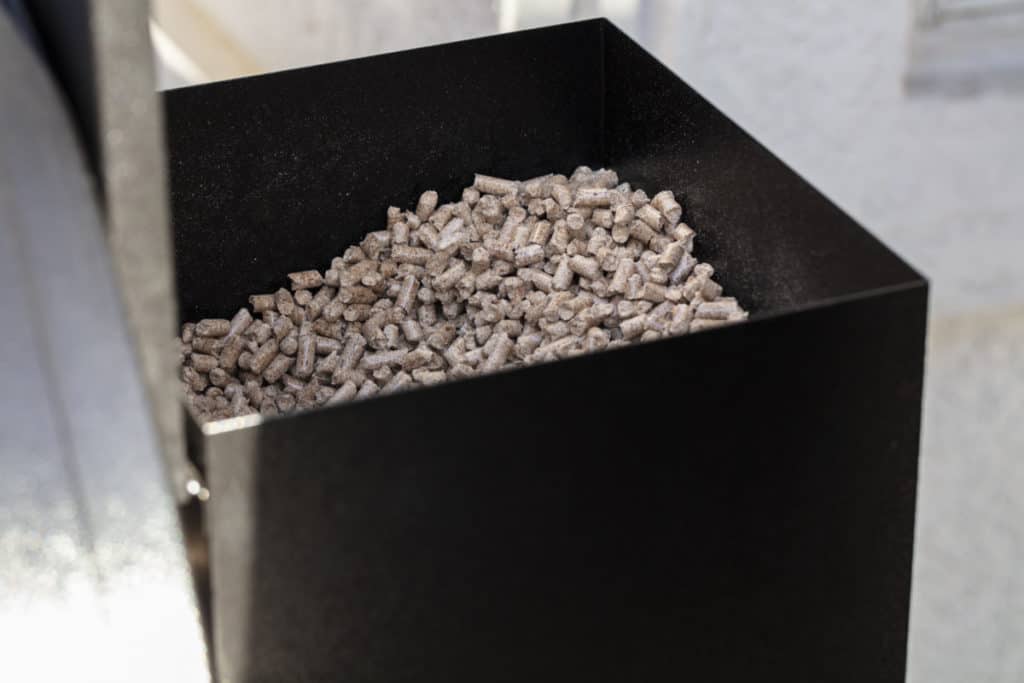
There are lots of different smokers on the market, but these are 5 of the best according to price, overall value, quality, and customer satisfaction. Visit the product links to compare prices, availability, and view additional product details.
1. Traeger TFB57GLEO Pro Series 575 Grill
2. Camp Chef SmokePro SG Wood Pellet Grill Smoker
3. Z GRILLS Upgrade Wood Pellet Grill & Smoker
4. PIT BOSS 700FB Pellet Grill
5. Green Mountain Davy Crockett Foldable Portable Wood Pellet
Of course, if you have a smoker that you’ve already set your heart on, that can work just as well too. There’s no one-size-fits-all product when it comes to choosing a smoker.



